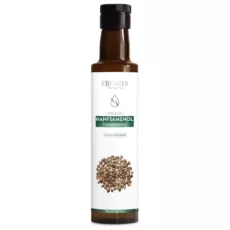Wine Vine

The vine (Vitis vinifera) is a perennial liana-like plant from the grape family (Vitaceae). A rich palette of hues—violet, dark blue, black, gold, red, green, pink, and white—dapple the leaves and fruit of the vine in autumn. Grapes capture the energy and vital force of the sun, symbolizing fertility, joy in earthly life, passion, and beauty.
The vine is a divine tree of life, and also a symbol of Christ and the Christian Church. Wine is valued as a divine blessing. It mysteriously transforms, reveals truths, and inspires. As a symbol of Christ’s blood, wine is part of Holy Communion.
The vine is the most ancient cultivated plant on earth. According to paleontological research, impressions of fossilized grape leaves, stem fragments, and seeds found in the Northern Hemisphere from Neogene and Paleogene deposits (about 2.58–66 million years old) show the long existence and wide distribution of the genus Vitis.
Archaeological finds confirm that vineyards were cultivated some 6,000–8,000 years ago in Assyria, Egypt, Babylon, and Central Asia. Written sources report that during the construction of Solomon’s Temple, workers were given 20,000 baths of wine. This testifies that viticulture existed in the Mediterranean 1,000 years before our era.
Details on grape and wine production appear in ancient Egyptian hieroglyphs from the 4th (2400 BCE), 17th, and 18th dynasties. Written records state that the ancient Greeks, Phoenicians, and Romans used grapes both for winemaking and as food. In the Old Testament it is told that the first person to plant a vineyard after the Great Flood and to discover wine was Noah. After leaving the Ark on Mount Ararat, he began “to till the land and planted a vineyard. And he drank of the wine and became drunk.”
Grapes are mentioned in nearly every ancient Greek myth, especially in legends devoted to their mighty patron—the god Dionysus. One legend says that Dionysus, bitterly mourning the death of his beloved Ampelos, turned his body into a supple vine heavy with grapes and named the plant “ampelos,” and from his soul he fashioned a new star—Vindemiatrix. It can still be seen in the sky or on star charts in the constellation Virgo.
According to the Thracian people, the intoxicating effect of wine helped priests to contact the gods, so the Thracians fell into ecstasy and held long conversations with them. Thus they created a cult around this grape drink. Other facts also attest to the reverence for wine and grapes. In ancient Greek literature wine is often mentioned, notably in Homer’s Odyssey. On Achilles’ shield, the skillful Hephaestus depicted—among other gold images—a great vineyard laden with grapes.
Research on grape seeds began a few decades ago, prompted by the “French paradox.” It turned out that in France the percentage of people with cardiovascular disease is exceptionally low. Scientists established that the secret lies in their famous red wine. Subsequent studies proved that oligomeric proanthocyanidins, present in high concentrations in the seeds of dark grapes, protect against heart disease. Grapes are among the most beneficial fruits for humans, thanks to their nutritional and bioactive substances. They contain virtually everything needed for a healthy body and provide as much energy as milk. That is likely why grape juice has been dubbed by experts “plant milk.”








